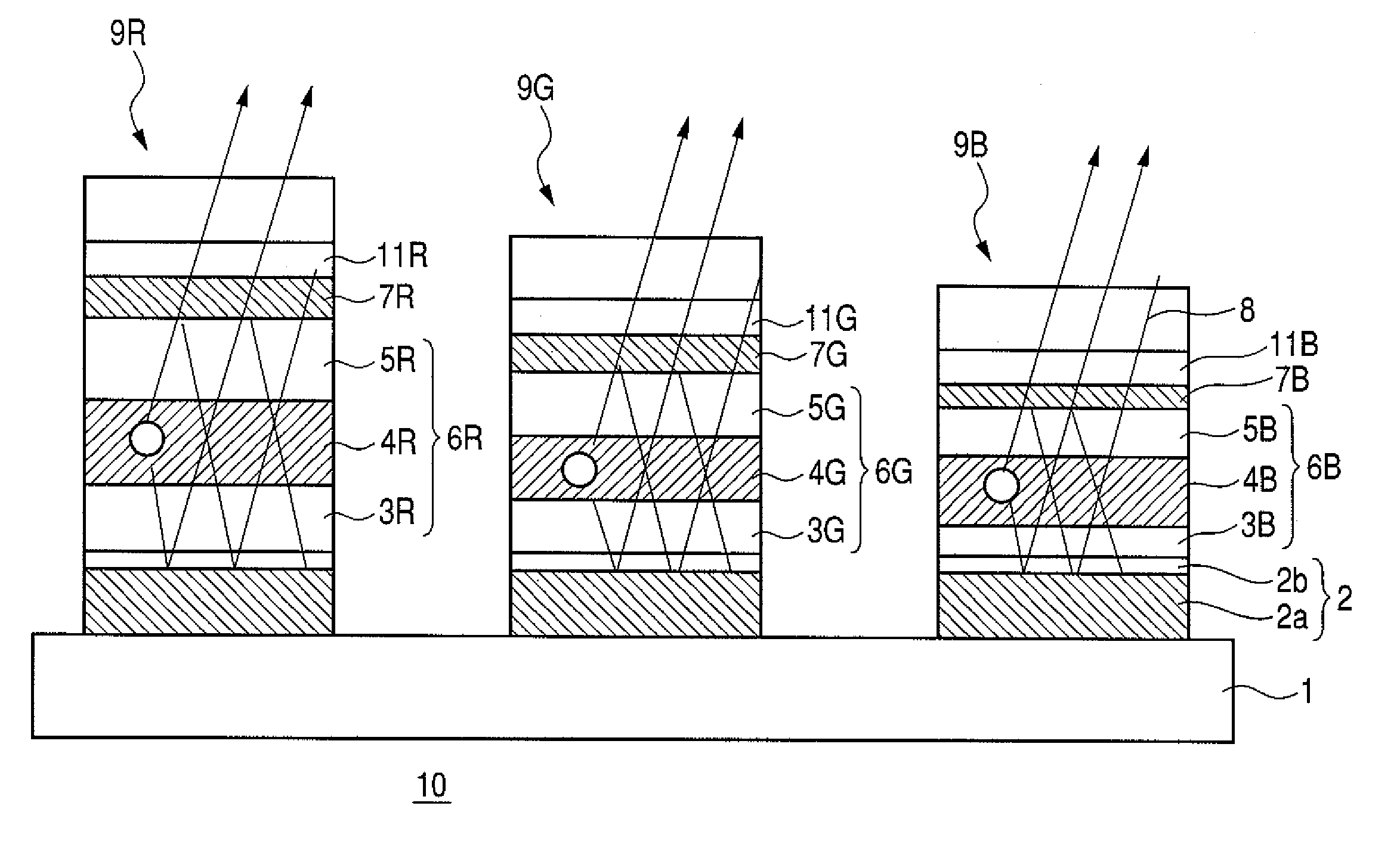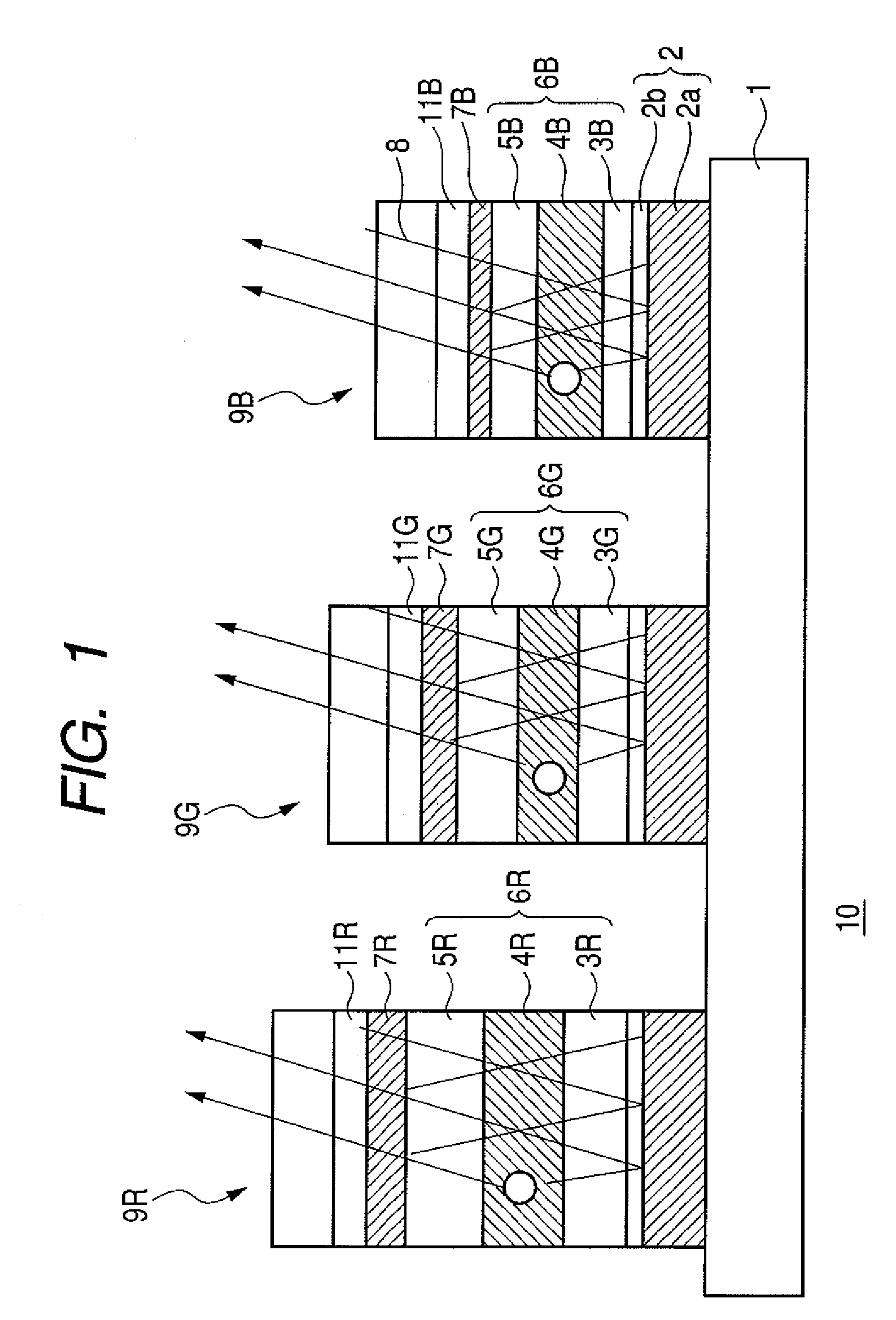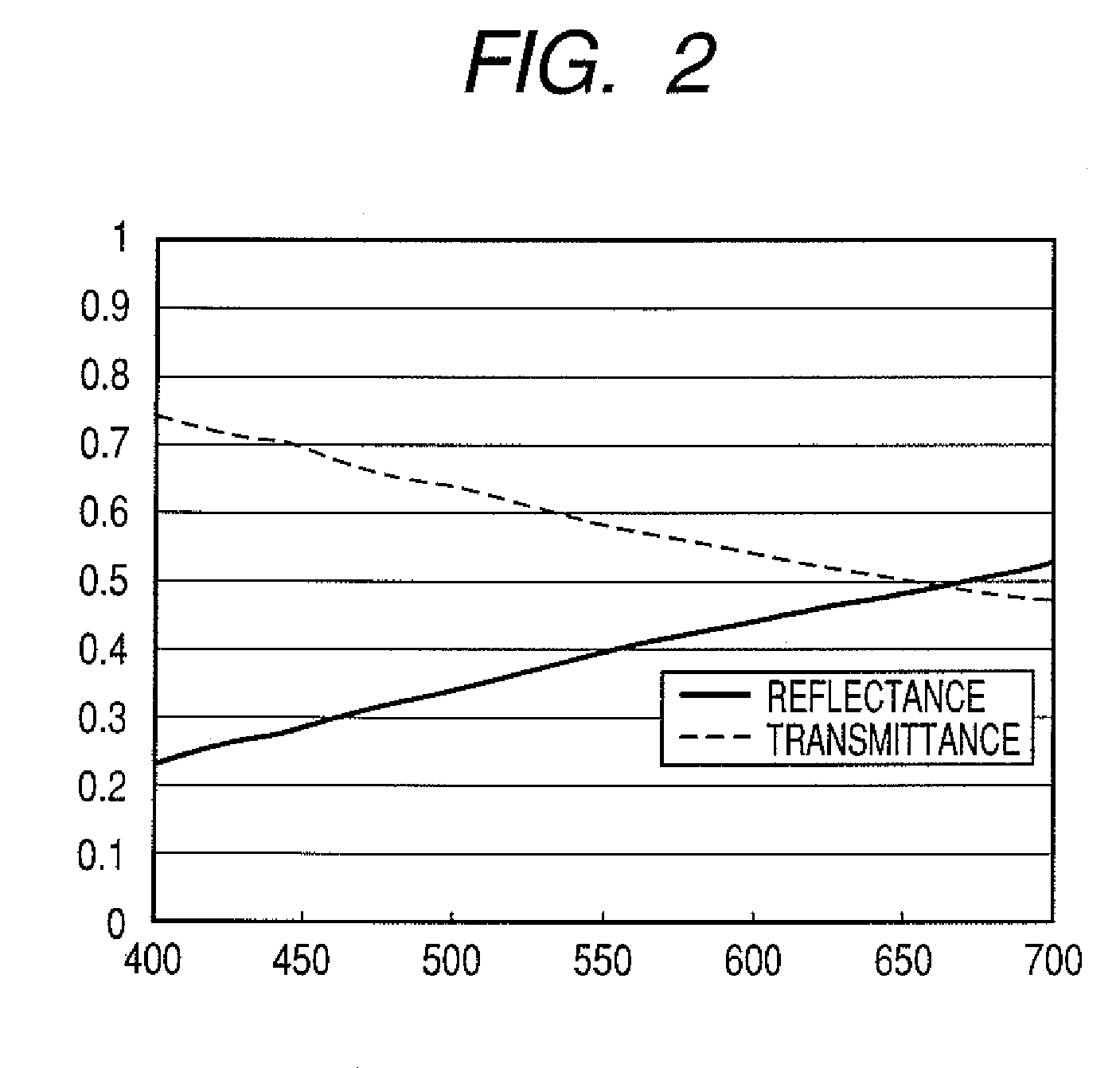OLED with semi-transparent layer
a semi-transparent layer and organic light technology, applied in the direction of organic semiconductor devices, discharge tubes/lamp details, discharge tubes luminescnet screens, etc., can solve the problem of chromaticity difference, large difference in view angle, and insufficient improvement of luminous efficiency of organic light-emitting devices. to achieve the effect of improving the entire luminous efficiency
- Summary
- Abstract
- Description
- Claims
- Application Information
AI Technical Summary
Benefits of technology
Problems solved by technology
Method used
Image
Examples
first embodiment
[0028]FIG. 1 is a partially enlarged sectional view illustrating an example of the constitution of an organic light-emitting device according to the present invention.
[0029]An organic light-emitting device 10 shown in FIG. 1 is an organic light-emitting device having organic light-emitting elements 9R, 9G and 9B showing red (R), green (G) and blue (B) emission colors, respectively, and all organic light-emitting elements each have a micro cavity structure.
[0030]Each of the organic light-emitting elements 9R, 9G and 9B has such a constitution that a first electrode 2 having a reflective surface as an anode, a hole transport layer 3R, 3G or 3B, a light-emitting layer 4R, 4G or 4B, and an electron transport layer 5R, 5G or 5B as an organic compound layer 6R, 6G or 6B, a semi-transparent layer 7R, 7G or 7B as a cathode, a transparent conductive layer 11R, 11G or 11B, and a protective layer 8 are sequentially provided on a substrate 1. The organic light-emitting device is of a top emissi...
second embodiment
[0051]In first Embodiment, the thickness of the semi-transparent layers 7R, 7G and 7B was determined in order that an organic light-emitting element for each color might have the maximum efficiency. However, when an organic light-emitting device is considered to be a display device, not only luminous efficiency but also a view angle characteristic is extremely important. In general, the view angle characteristic of an organic light-emitting element using a micro cavity structure deteriorates as resonance is intensified. To be specific, as the semi-transparent layer of the element is made thicker, a chromaticity difference due to a view angle becomes larger. In view of the foregoing, in this embodiment, an organic light-emitting device taking not only luminous efficiency but also a view angle characteristic in consideration is provided. Incidentally, this embodiment is shown in FIG. 4, wherein like numerals are employed to denote elements similar to those shown in the first embodimen...
third embodiment
[0057]An organic light-emitting device of this embodiment has the same constitution as that of first Embodiment except that a material for the semi-transparent layer 7B of the organic B light-emitting element having the worst luminous efficiency is changed.
[0058]To be specific, both the semi-transparent layers 7R and 7G are each formed of a silver film having a thickness of 10 nm, and the semi-transparent layer 7B is formed of an aluminum film having a thickness of 10 nm.
PUM
 Login to View More
Login to View More Abstract
Description
Claims
Application Information
 Login to View More
Login to View More - R&D
- Intellectual Property
- Life Sciences
- Materials
- Tech Scout
- Unparalleled Data Quality
- Higher Quality Content
- 60% Fewer Hallucinations
Browse by: Latest US Patents, China's latest patents, Technical Efficacy Thesaurus, Application Domain, Technology Topic, Popular Technical Reports.
© 2025 PatSnap. All rights reserved.Legal|Privacy policy|Modern Slavery Act Transparency Statement|Sitemap|About US| Contact US: help@patsnap.com



